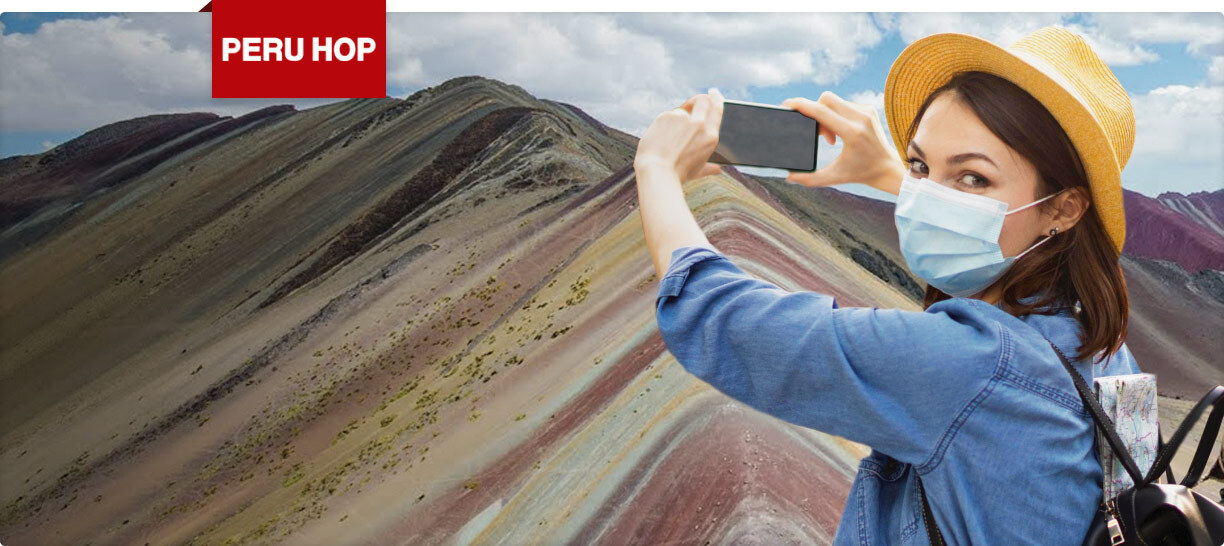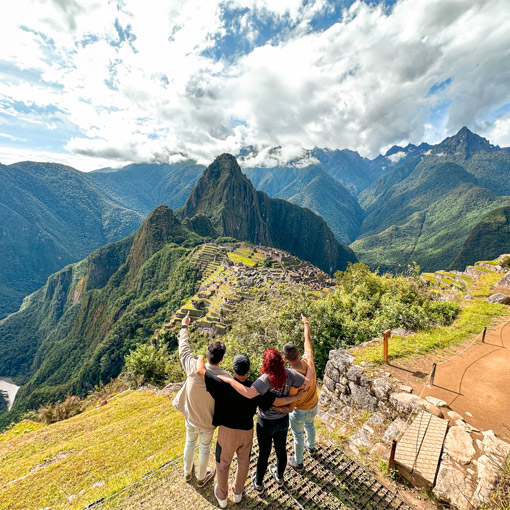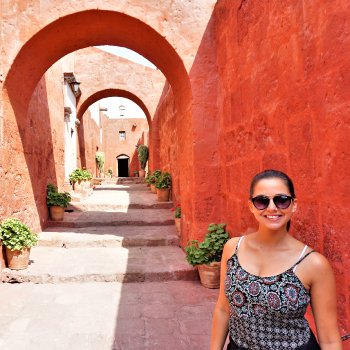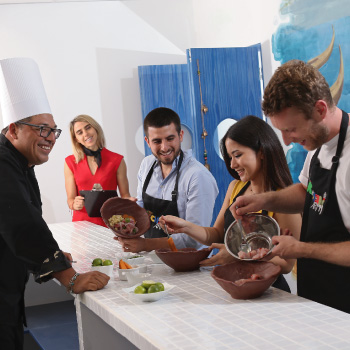Drinking Water in Peru: Safe or Unsound?
Having received a handful of conflicting opinions on a previous post about tap water in Peru, it seemed that a follow-up article was in order. So, I decided to throw the question out to some of the top English-language bloggers in Peru, long-term residents who are perfectly placed to give their opinions. Their answers make for interesting reading, and cover the tap water issue in Lima as well as some more far-flung destinations. So, in no particular order, here are some Peru tap water opinions from around the country…
Do You Drink Tap Water in Peru?
Barbara Drake (Lima) – An American in Lima

“Water quality in Lima and Peru is a huge issue, not just for tourists and backpackers, but for the health of the country in general. Peruvians, as a whole, don’t care much that their potable water fails to meet WHO standards for drinking. They are accustomed to buying well water for drinking or to boiling water — there is no national movement to improve potable water standards nationwide. Rather, the country is on a “water for everyone” kick — which I might translate as, “A little dirty water for everyone.”
I have lived in Peru for three years and have been visiting since ’95. I never drink the tap water. The source for Lima’s water is the Rio Rimac, one of the world’s most polluted rivers. The tributaries that feed the Rimac are full of runoff from mining operations, so the water that comes out of the tap in Lima is very high in heavy metals, and you can’t remove those with filters or with the treatment methods that SEDAPAL uses in its plant in Lima. Those heavy metals are a huge hazard for anyone who drinks the water.
The treated water that comes out of the tap is very, very high in chlorine. This is the main way that SEDAPAL tries to kill bacteria and other impurities in the water. There is a lot of e-coli in Rio Rimac as well, and filters do an iffy job of removing that. You will hear conflicting accounts of what filters can do. Some claim that filters remove e-coli. Other people (including my Peruvian cousin, who designs water filtration systems for use in Asia) are adamant that the filters allow e-coli — he refuses to drink the tap water when he is here.
Another troubling aspect of the Rimac water is that prior to reaching the SEDAPAL plant, the water carries the cholera virus. I met a researcher for the CDC last year who was spending three months in Lima examining cholera in the Rimac. He told me that the levels were high — he was pretty disturbed. However, I have not seen the results of his study published anywhere that the public can find it. But when you consider that Peru was the site of a huge cholera outbreak in ’96 (I believe), you can see that the river itself is a potential source of another future outbreak.
It’s very hard to get real statistics on the tap water in Lima. Good luck trying to hunt this down. I find this lack of transparency very troubling, and equally as troubling is that Limenos as a whole aren’t concerned.”
Kelly Cannon (Lima) – My Life in Peru

“Yes, I drink the tap water here. I don’t boil it or do anything with it first, I drink it and use it for everything right out of the tap. I live in Miraflores in Lima; if I lived somewhere in the provinces, I’d probably be less likely to do so.
When my family visits from the US, they drink the water, too. The first few times, we tried to be more careful, but after a few times with no one getting sick, we quit worrying about it. I’m more concerned about unwashed fruits/veggies in restaurants than I am about the water.
However – if I were only coming down for a vacation, especially if I were going to be doing backpacking, hiking or anything else adventure related, I’d definitely avoid the water. For one thing, I have less faith in the quality outside of Lima, as mentioned above. Also, no point in losing days of your vacation to stomach bugs, or missing out on a planned activity.”
Tom Filipowicz (Chiclayo) – My Slice of Peru
“I don’t know of anyone in Chiclayo who drinks water straight from the tap. Every house I’ve been in has a pitcher of boiled water standing somewhere, including our house. My wife’s friends and family don’t recall anyone drinking from the faucet as far back as they can remember. I brush my teeth with tap water but my wife and her son won’t. I don’t know if that means that the water actually is bad or if tradition says it is. For me it’s not a problem because I never drank water even in the States, preferring to get my H2O from a favorite beverage.”

Stuart Starrs (Lima) – En Perú

“I did the same as everyone else when I first came to Peru… avoided tap water, salad washed in tap water, and ice probably made from tap water (little did I know even low budget places buy it in bags from supermarkets). I didn’t take this to extremes like brushing my teeth with bottle water – if you’re so weak that that worries you, you’d probably die if you went swimming in a river or lake.
They say that water from even developed countries can make you sick until you’re accustomed to the different organisms, so unless you are of the opinion that tap water in Peru is so badly controlled that they might pump sewage into your home, you’re going to get used to it after a long stay. Besides, the water is the least of your worries – yesterday’s mayonnaise, a knife being used to cut chicken then your salad etc etc are bigger concerns.
If I choose to drink tap water in Lima where I live, it will no longer make me sick. If I were to drink a lot, I might get a rumble in my stomach and have to visit a bathroom a little earlier than I expected, but I wouldn’t be bed-ridden. In the mountains, the tap water is heavier and thicker and tastes like mineral water. I don’t drink it, but I assume it’s very briefly filtered river water. Most Peruvians boil their water as a precaution; it’s cheaper than buying bottled water.
So do I regularly drink tap water? I did when I had a filter connected to a oxygeniser – it filtered out foreign material then killed off any bacteria. Now that I don’t have the filter I drink bottled water. I’m not so much worried about getting sick (if I was I’d simply drink a little each day to get used to it) but I’m paranoid about the amount of lead and other heavy metals it might contain. Most water on the coast comes from the rivers; along those rivers are dozens of mining operations. Do I trust big foreign mining companies to not pollute the rivers and the Peruvian government to adequately enforce laws? Not one bit. You only have to read the news to find out why.”
Ward Welvaert (Cusco) – Life in Peru
“Not no, but hell no. I boil the water and drink it, or buy bottled water if I’m away from home. Why? Because the locals don’t drink the water either. One time in Lima I think I was served a glass of tap water by an unhappy waiter and I was sick as the proverbial dog for a day.
The water system in Cusco is terrible. Probably 2-3 times per month, Sedacusco (the water people) shut off the water in our neighborhood for an hour or half a day. The water appears to have a lot of calcium in it (visible white stuff collects at the bottom of my water cooker).”
Julio Cesar Tello (Lima) – Karikuy Blog
“Normally in Peru I personally stick to bottled water, my favorite brand is San Mateo, I don’t like the taste of the others, sometimes they feel flat. For brushing my teeth I use tap water. In emergencies where there is no bottled water available I will drink tap but not in great quantities. I don’t believe I have ever gotten sick by the tap water but I was also born in Lima so I may have some defenses against it. I encourage my volunteers to buy bottled water and they almost always do, some of them even use it to brush their teeth.
In the countryside I will drink spring water and have not had any problems with that as well, I have even drank water from the glaciers and it was delicious, I would have no problem drinking that in large quantities. However if it is coming out of a metal pipe then you know you have to be careful.”
Scott Wagner (Pucallpa) – Sabor a Selva

“Is the tap water in Pucallpa safe to drink? Short answer, no. We are connected to the ‘safe’ treated water system. Even if you boil it, it is still awful. The sediment at the bottom of your container should be your first indicator. Why is this? The city water system in Pucallpa is only functional from 5:30am-12:00pm and again from 6pm-11:30pm. They have no meters here, so this is their way of controlling consumption. My wife and I always use bottled water (we recycle), even for preparing refrescos. The only exception, brushing our teeth.”
Drinking Water in Peru: A Risky Business
Well, there you have it. The results of this little survey certainly don’t shower much praise on Peruvian tap water. We have only one person drinking water straight from the tap on a regular basis, while everyone else prefers to go with boiled, filtered or bottled water.
My thanks to all of the above Peru bloggers for taking the time to give your opinions on this tap water issue, each response is greatly appreciated. Of course, the debate doesn’t need to end here. Feel free to add your opinion in the comments box below, whether you are a born-and-bred Peruvian, an expat or a backpacker in Peru.











